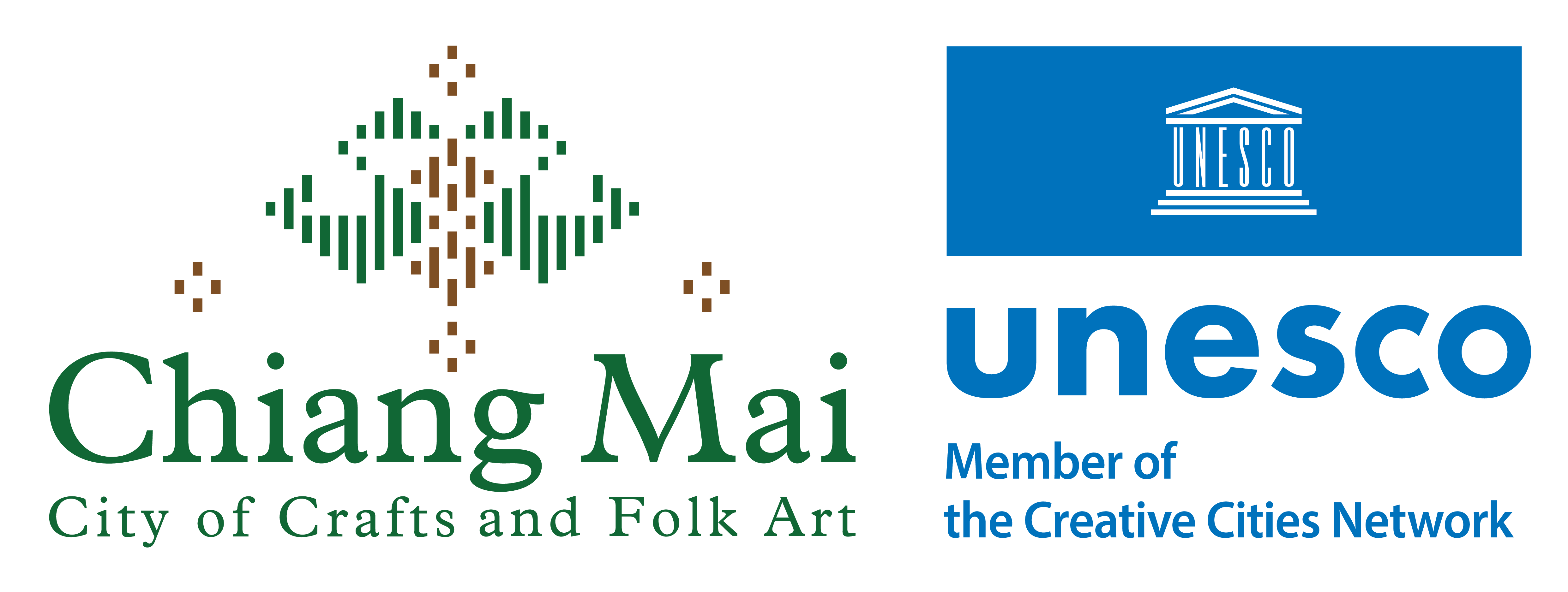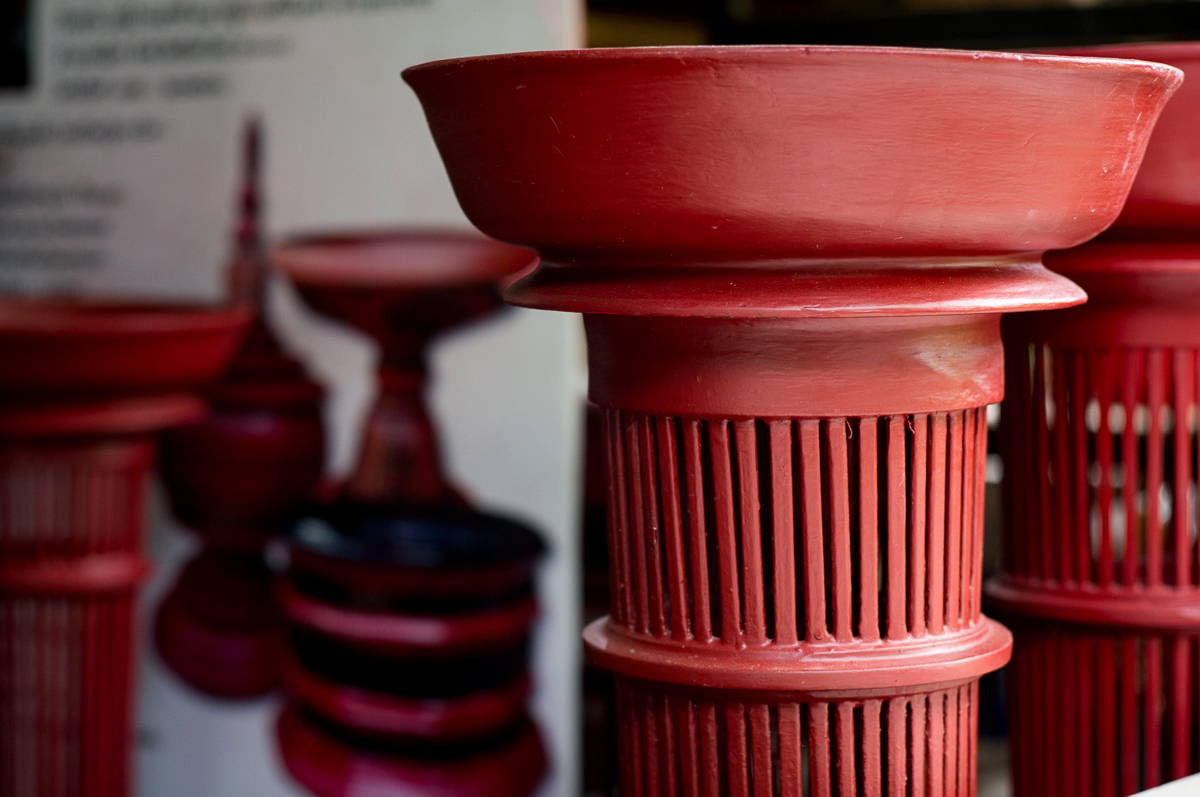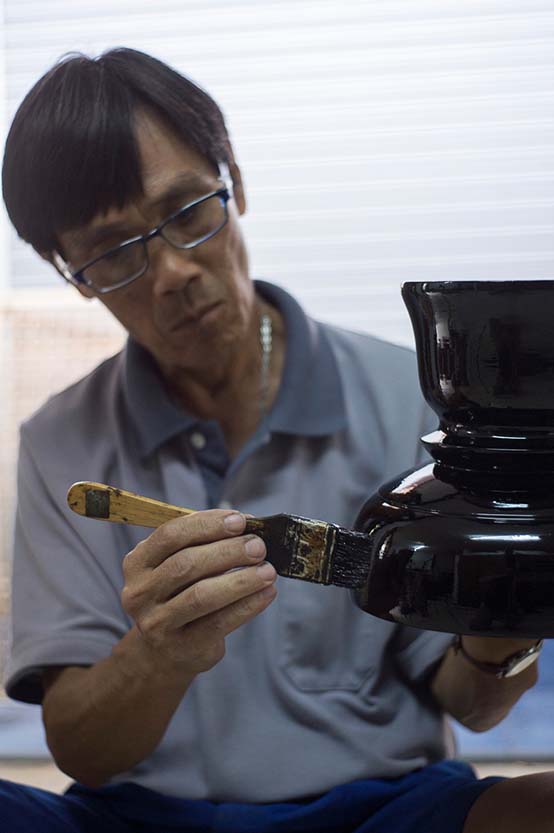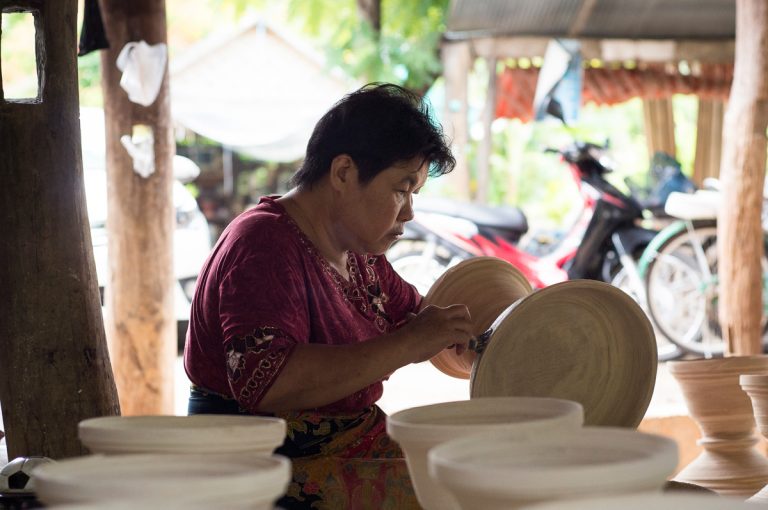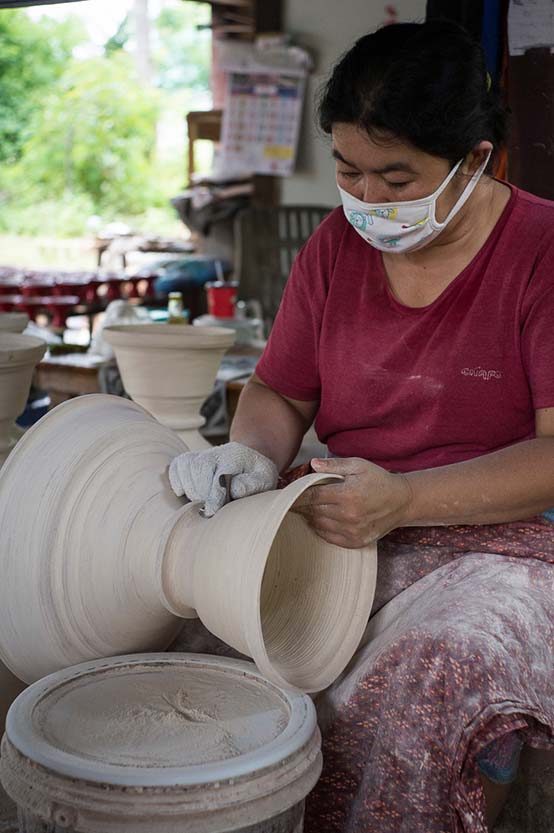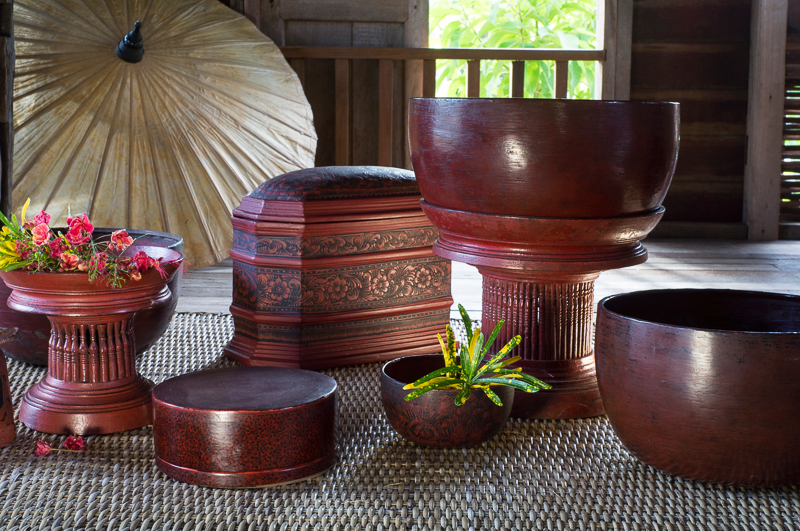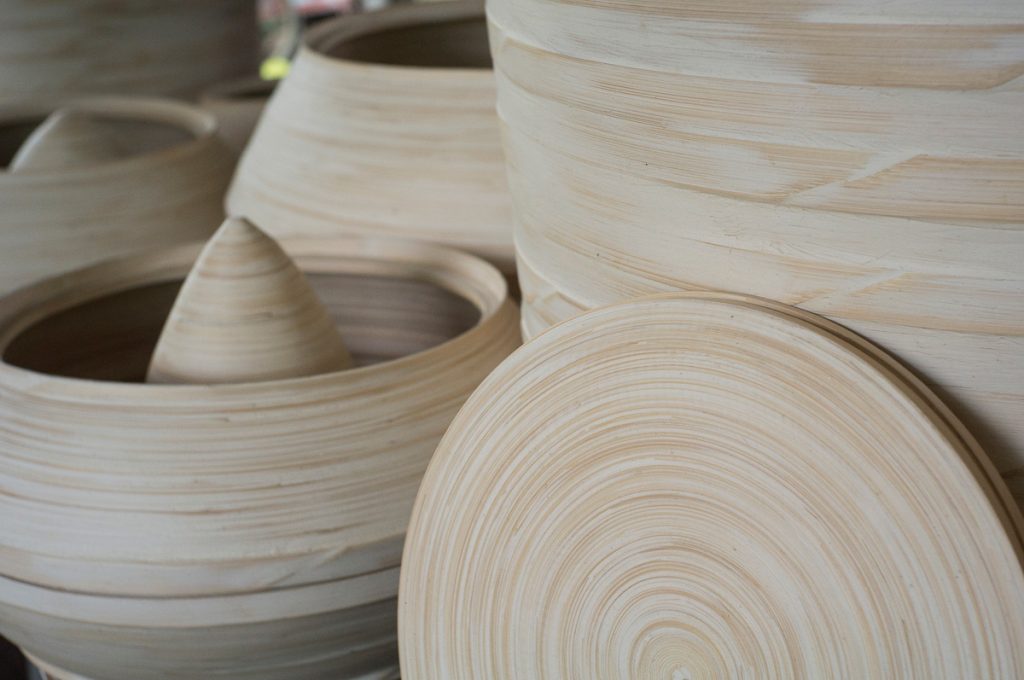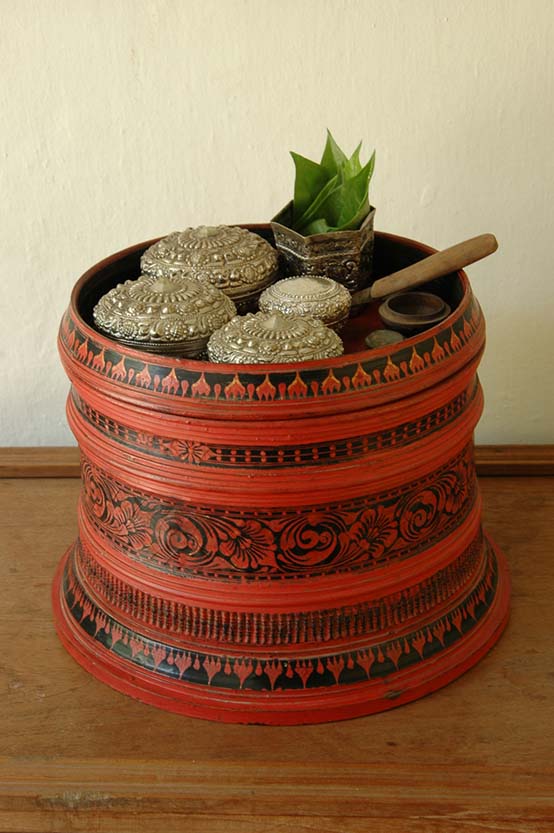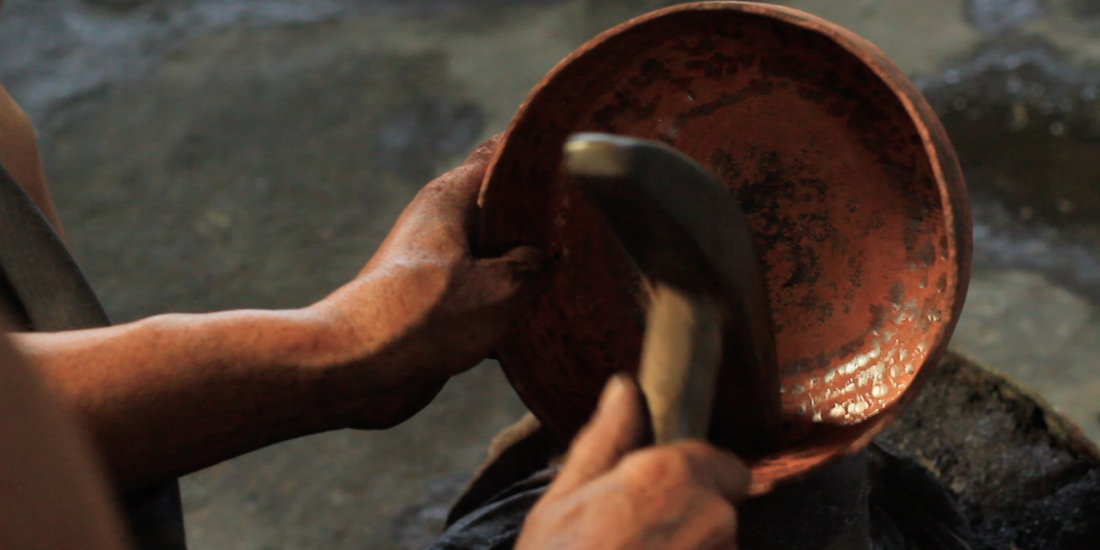Lacquerware

Lacquerware
is a type of handicrafts that are local to Chiang Mai Province. These containers are made in different shapes and forms with coiled or woven bamboo stripes, enameled with the resin from crown flower plants to strengthen the products, and painted with cinnabar or scratched in order to create motifs on the products. Some lacquerware products may also be garnished with gold leaves or silver leaves. Lacquerware products are collectively called ‘Khua Hak Khua Hang’, ‘Khrueang Hak Khreuang Hand’ or Khrueang Hak Khreuang Kham’ in local dialect, depending on the decorative techniques and materials whether they are decorated with cinnabar or gold leaves. They may be called by their utilizations such as ‘Khan Dok’/ ‘Khan Mak’ (Bowls)/ ‘Khan O’ (Bowls), ‘Hip Pha’ (boxes), and ‘Ap’/‘Oop’/ ‘Pung’ (containers). The word ‘Khrueang Khoen’ is hypothesized to be coiled since not so long ago after ‘Thai Khoen’ tribal people who are proficient in weaving these utensils. Lacquerware Making Method The technique of making lacquerware products in Chiang Mai style that has been passed on for a long period of time starts with the molding or the creation of the forms of containers by weaving bamboo stripes (Tok) to cover the mold, which is similar to the production technique of other woven products. . Nevertheless, some containers have to be made with the bamboo stripe coiling technique. The coiling method starts with the coiling of the outmost bamboo stripe to form a circle with the longest diameter. Then, make a cut line at each end of the bamboo stripe in order that the two ends of the bamboo stripe can be connected to each other. The second strip is coiled inside the circle of the first stripe, and the latter strips are coiled inward until the needed shapes are formed. This coiling technique is used for making containers with round or cylindrical shape such as vases and trays. To create containers with other shapes, wood mold in different shapes are used. Such containers are bowls, bowls with covers, trays that are in the shape of a leaf, and betel nut sets. After forming the containers, the craftsmen will cover all over the containers with the resin from crown flower plants. The containers will then be left until they are dried and be polished in order that the surface will be smooth. Afterwards, lacquer is applied all over the surface of the containers until the inner layers are all covered. At this step, the lacquerware is finished but they still do not have any motif. The decorative motifs on lacquerware products of Chiang Mai can be drawn, molded (pan rak), printed (phim rak) or pasted with gold leaves or small pieces of glass, or gold appliqué or surface scratching technique. However, the motif creation techniques that have been important and unique for lacquerware from Chiang Mai since the ancient time are surface scratching and colour drawing. Lacquerware products of Chiang Mai can be categorized with shapes and decorative techniques into 3 groups. The first group is the group of local lacquerware products that are enameled with plant resin and lacquer for a few times and decorated with simple techniques. They are utensils in daily life. These lacquerware products are painted with black lacquer and red cinnabar colour. Lanna people in the past made such products for using in their households. The second group is the group of Lacquerware products from Ban Khoen Nantharam Village. The structures of such products are woven with small round bamboo sticks cross woven with flat bamboo stripes from the bottoms of the containers until the desired shapes are formed. These lacquerware products have strong structures and justified surface. After the lacquer is applied, the smooth and light weighted containers are finished. Afterwards, they are decorated with surface scratching technique called ‘hai dok’. Lacquerware products in this group are not containers in small sizes such as betel nut sets, small bowls, small boxes and covers and pedestals of alms bowls. The other group of lacquerware products is the group of lacquerware products from San Pa Tong District. Their structures are cross woven or coiled until the shapes are formed. Afterwards, bamboo flat stripes or rattan threads are used for tightening the structure. After the lacquer is applied, the products are decorated with cinnabar red colour drawing technique. Sometimes, gold appliqué technique is used in order to reinforce the motifs. These lacquerware products are big containers such as dowry trays, plant seed baskets and fabric hampers. Sources of Lacquerware Products in Chiang Mai Province 1. Ban Khoen Nantharam Village, Mueang District, Chiang Mai Province, is a big and famous hub of lacquerware product manufacturing. This village also produces lacquerware products for sale. The identities of lacquerware products from Ban Khoen Nantharam Village are smooth surface and light weight. The applied decorative technique is the ancient surface scratching technique. Containers to be decorated with surface scratching technique must have thin and smooth surface the resin that covers the containers must be completely dry. To draw motifs, a sharp-ended metal stick is used for scratching the resin on the surface. After the scratching is done, the resin that is mixed with red cinnabar colour is applied to the scratched trails. The products are eft dry and scrubbed in order to peel the outmost crust off until the red motifs on the black background are seen. Afterwards, clear lacquer is applied on the surface of the products in order to make sure that all the motifs will stick to the containers. This decorative technique is an identity of lacquerware product from China Mai, which has been passed on from generation to generation since past time. In addition, it is discovered that shells are attached to the bases of lacquerware bowls in order to protect the containers and to manifest the financial statuses of users. 2. Ban Si Pan Khrua Village, Mueang District, Chiang Mai Province, is another community in Chiang Mai Province that has been manufacturing lacquerware products since the past. Most lacquerware products from Si Pan Khrua Village are containers that are formed with the coiling technique, such as trays, bowls and boxes. However, materials for the manufacture of lacquerware products, such as resin from plants and cinnabar, are rare, local craftsmen in Si Pan Khrua Village turn to use modern materials such as oil paints and plastic paints instead. 3. Ban Ton Haen Village, San Pa Tong District, is another village that is the hub of lacquerware products. Ton Haen Villagers have expertise in the manufacture of lacquerware products, the application of crown flower plant resin, and drawing of red cinnabar motifs. In the past, containers like bowls and food bowls in man styles manufactured by Ton Haen villagers were products that could make a lot of money for the villagers. The genuine lacquerware products from Ton Haen Village are unique in terms of decorative motifs. Craftsmen paint black resin on the wood structures that are cross woven or coiled with bamboo or teakwood, jackfruit wood or mimosa wood stripes. The containers are decorated with bright red motifs drawn with cinnabar as beautiful vines and foliage, which reflect the proficiency of the artists who use brushes to draw the motifs. In some containers, gold leaves are applied on the edges of motifs or the pollens of flower motifs to highlight the focal spots. In some containers, yellow pigment is used instead of gold leaves in order to create another style of beauty.
